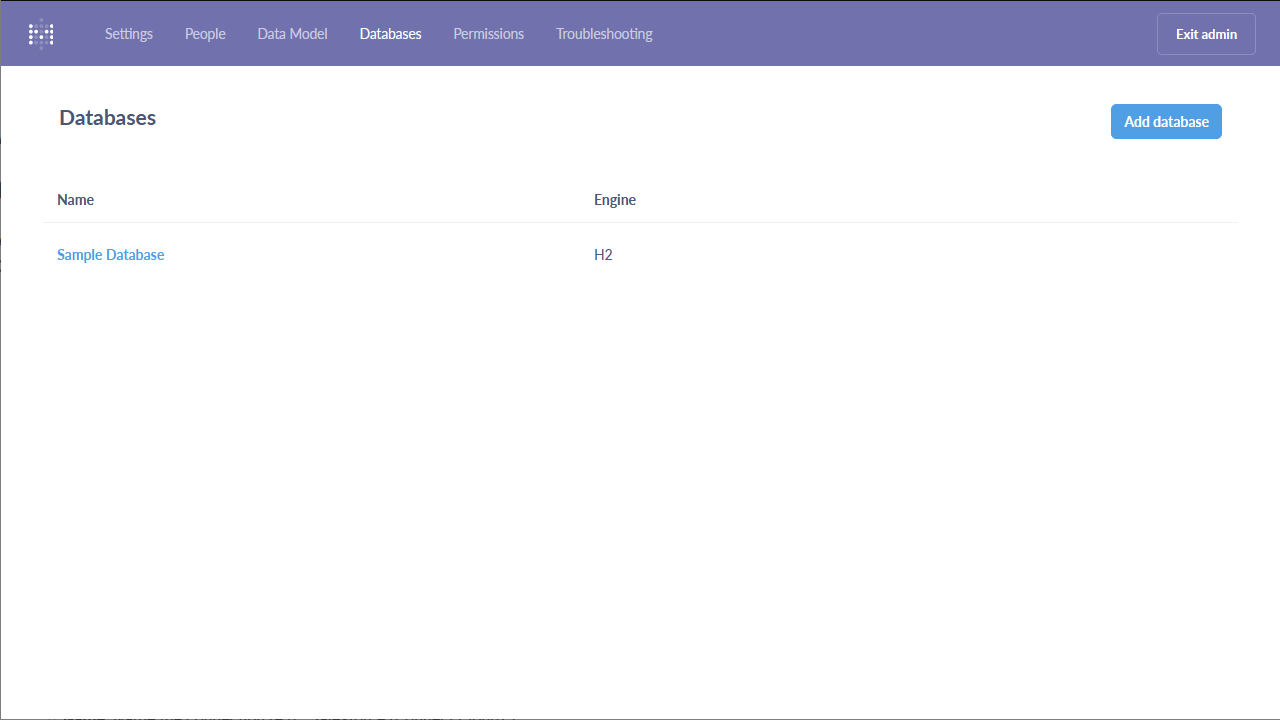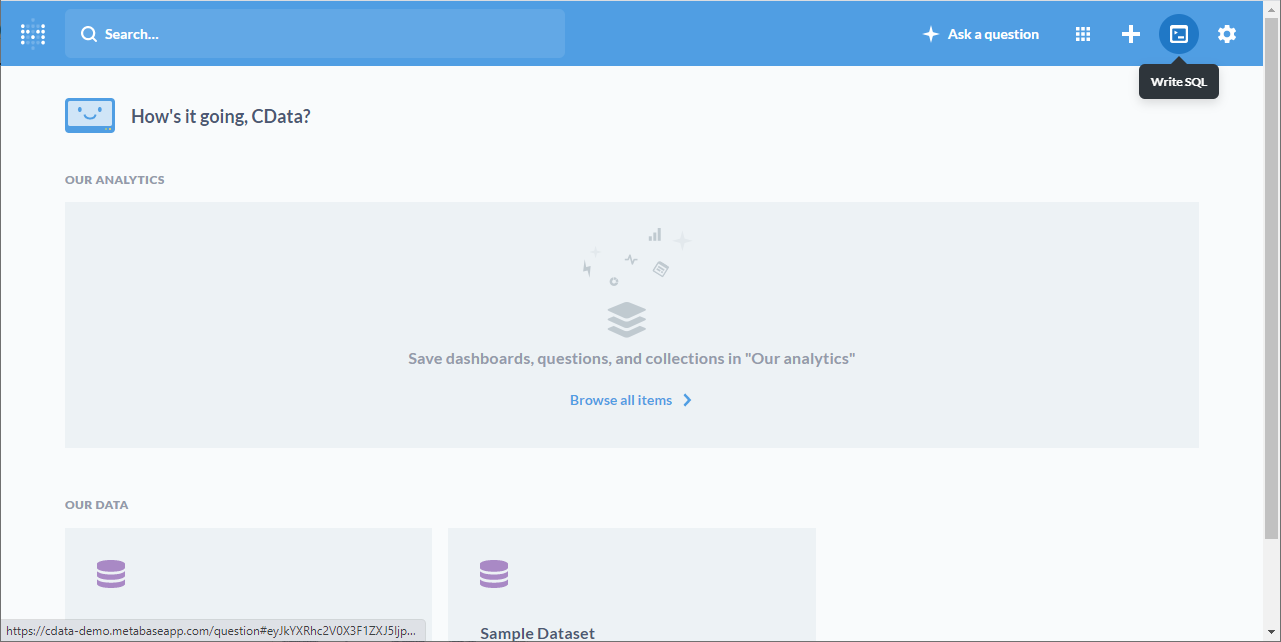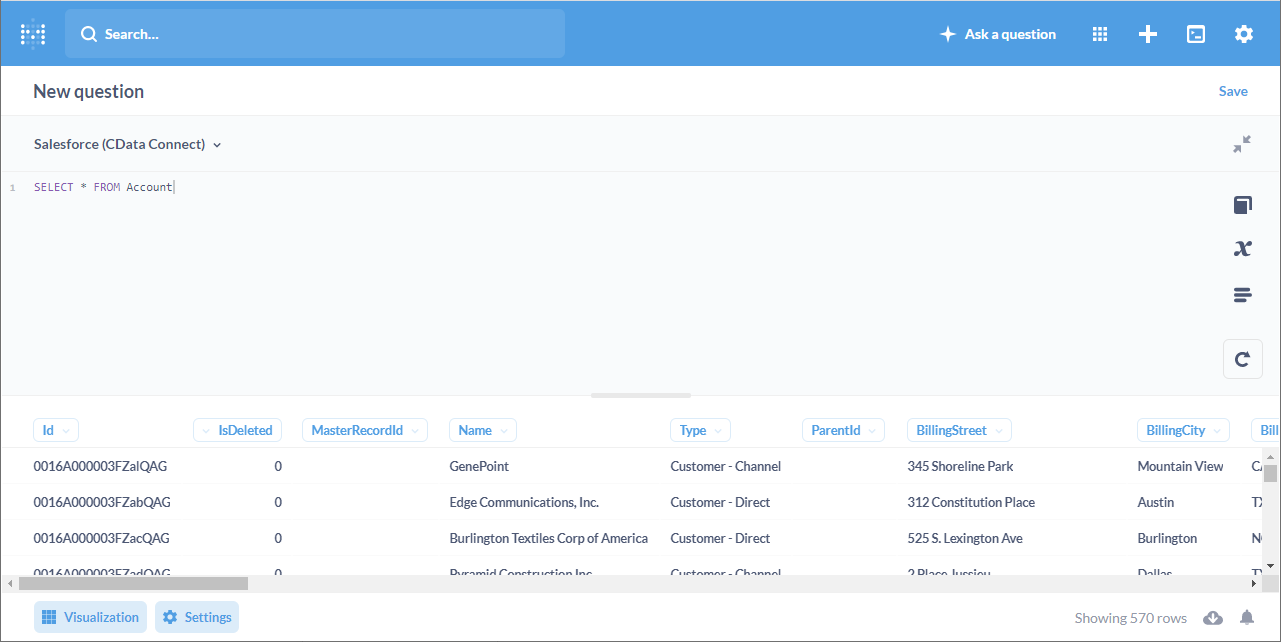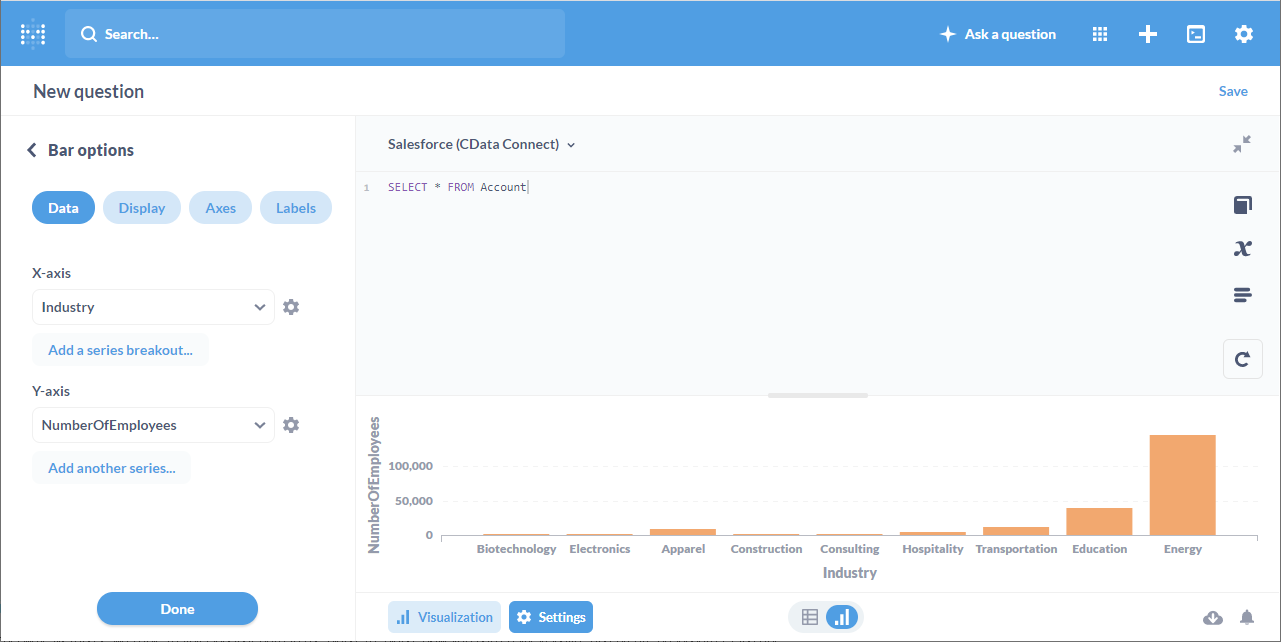Discover how a bimodal integration strategy can address the major data management challenges facing your organization today.
Get the Report →How to integrate Metabase with SAP SuccessFactors Data
Use CData Connect Cloud to connect to live SAP SuccessFactors data and create an interactive dashboard in Metabase from SAP SuccessFactors data.
Metabase is an open source data visualization tool that allows users to create interactive dashboards. When paired with CData Connect Cloud, users can easily create visualizations and dashboards linked to live SAP SuccessFactors data. This article describes how to connect to SAP SuccessFactors and build a simple visualization using SAP SuccessFactors data.
CData Connect provides a pure cloud-to-cloud interface for SAP SuccessFactors, allowing you to easily integrate with live SAP SuccessFactors data in Metabase — without replicating the data. Connect looks exactly like a SQL Server database to Metabase and uses optimized data processing out of the box to push all supported SQL operations (filters, JOINs, etc) directly to SAP SuccessFactors, leveraging server-side processing to quickly return SAP SuccessFactors data.
Configure SAP SuccessFactors Connectivity for Metabase
Connectivity to SAP SuccessFactors from Metabase is made possible through CData Connect Cloud. To work with SAP SuccessFactors data from Metabase, we start by creating and configuring a SAP SuccessFactors connection.
- Log into Connect Cloud, click Connections and click Add Connection
![Adding a Connection]()
- Select "SAP SuccessFactors" from the Add Connection panel
![Selecting a data source]()
-
Enter the necessary authentication properties to connect to SAP SuccessFactors.
You can authenticate to SAP Success Factors using Basic authentication or OAuth with SAML assertion.
Basic Authentication
You must provide values for the following properties to successfully authenticate to SAP Success Factors. Note that the provider will reuse the session opened by SAP Success Factors using cookies. Which means that your credentials will be used only on the first request to open the session. After that, cookies returned from SAP Success Factors will be used for authentication.
- Url: set this to the URL of the server hosting Success Factors. Some of the servers are listed in the SAP support documentation (external link).
- User: set this to the username of your account.
- Password: set this to the password of your account.
- CompanyId: set this to the unique identifier of your company.
OAuth Authentication
You must provide values for the following properties, which will be used to get the access token.
- Url: set this to the URL of the server hosting Success Factors. Some of the servers are listed in the SAP support documentation (external link).
- User: set this to the username of your account.
- CompanyId: set this to the unique identifier of your company.
- OAuthClientId: set this to the API Key that was generated in API Center.
- OAuthClientSecret: the X.509 private key used to sign SAML assertion. The private key can be found in the certificate you downloaded in Registering your OAuth Client Application.
- InitiateOAuth: set this to GETANDREFRESH.
![Configuring a connection (Salesforce is shown)]()
- Click Create & Test
- Navigate to the Permissions tab in the Add SAP SuccessFactors Connection page and update the User-based permissions.
![Updating permissions]()
Add a Personal Access Token
If you are connecting from a service, application, platform, or framework that does not support OAuth authentication, you can create a Personal Access Token (PAT) to use for authentication. Best practices would dictate that you create a separate PAT for each service, to maintain granularity of access.
- Click on your username at the top right of the Connect Cloud app and click User Profile.
- On the User Profile page, scroll down to the Personal Access Tokens section and click Create PAT.
- Give your PAT a name and click Create.
![Creating a new PAT]()
- The personal access token is only visible at creation, so be sure to copy it and store it securely for future use.
With the connection configured, you are ready to connect to SAP SuccessFactors data from Metabase.
Connect to CData Connect from Metabase
After creating the virtual database, navigate to your Metabase instance. Use the SQL Server interface to connect to Connect Cloud.
- Navigate to the administration screen (Settings -> Admin) and click "Add Database" from the "Databases" tab
![Adding a new database connection to Metabase.]()
- Configure the connection to Connect Cloud and click "Save"
- Database type: Select "SQL Server"
- Name: Name the connection (e.g. "SAP SuccessFactors (Connect Cloud)")
- Host: tds.cdata.com
- Port: 14333
- Database name: The name of the connection you just created (e.g. SAPSuccessFactors1)
- Username: A Connect Cloud username (e.g. user@mydomain.com)
- Password: The PAT for the above Connect Cloud user
- Click to Use a secure connection (SSL)
![Configuring the connection to Connect Cloud.]()
Execute SAP SuccessFactors Data with Metabase
Once you configure the connection to Connect Cloud, you can query SAP SuccessFactors and build visualizations.
- Use the "Write SQL" tool to retrieve the SAP SuccessFactors data
![Click the 'Write SQL' button.]()
- Write a SQL query based on the SAP SuccessFactors connection in CData Connect Cloud, e.g.
SELECT address1, zipCode FROM ExtAddressInfo WHERE city = 'Springfield'
![Collected data (Salesforce is shown).]()
- Navigate to the "Visualization" screen, choose a visualization, and configure the visualization
![Collected data (Salesforce is shown).]()
More Information & Free Trial
At this point, you have built a simple visualization from SAP SuccessFactors data in Metabase. You can continue to work with live SAP SuccessFactors data in Metabase just like you would any SQL Server database. For more information on creating a live connection to SAP SuccessFactors (and more than 100 other data sources), visit the Connect Cloud page. Sign up for a free trial and start working with live SAP SuccessFactors data in Metabase today.
















